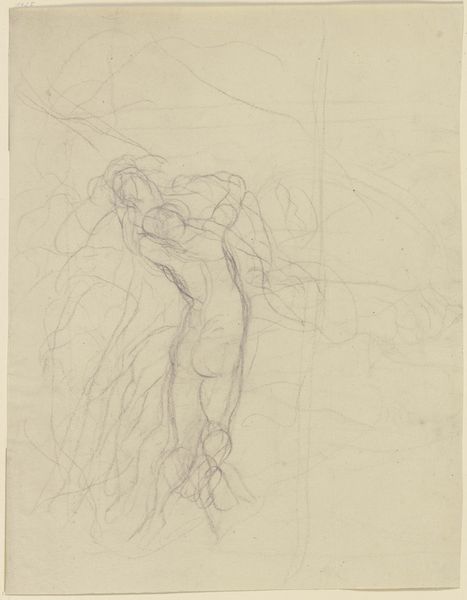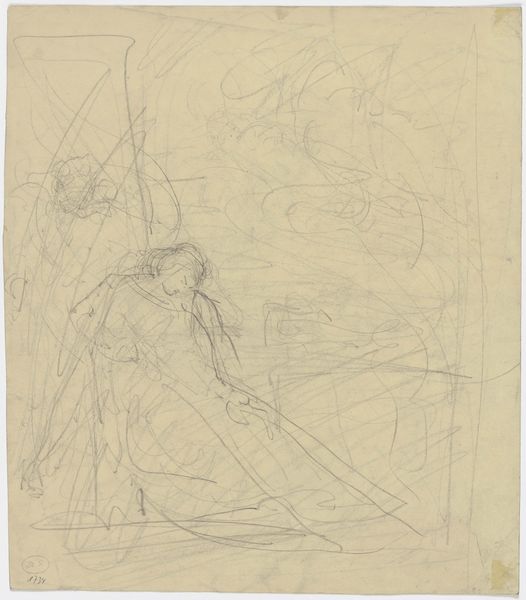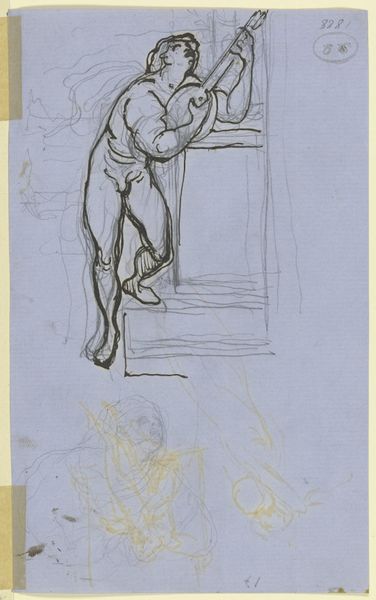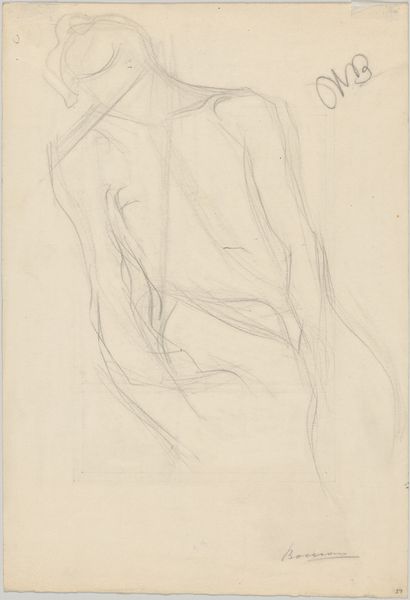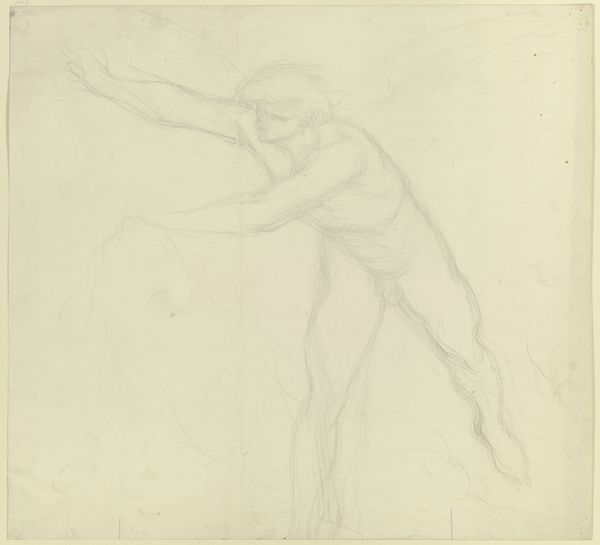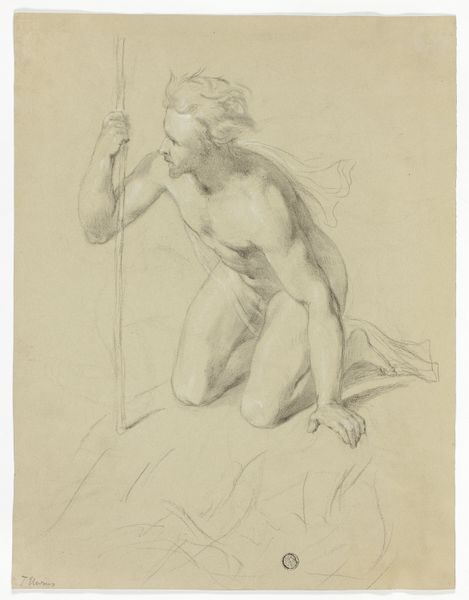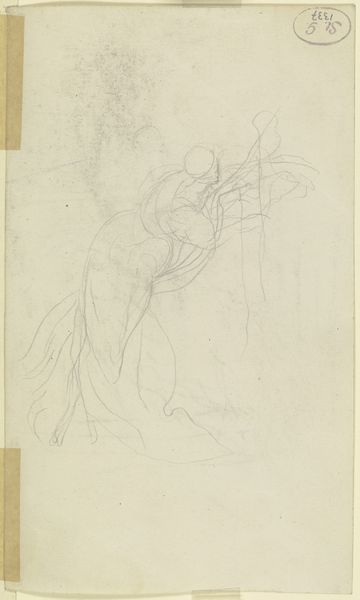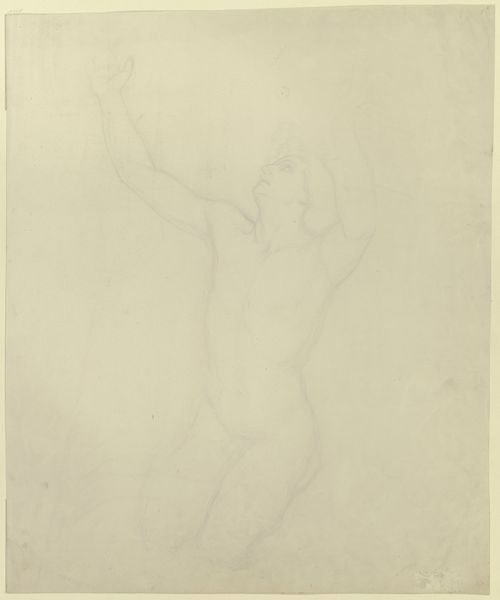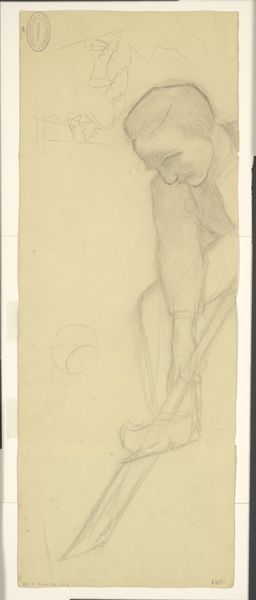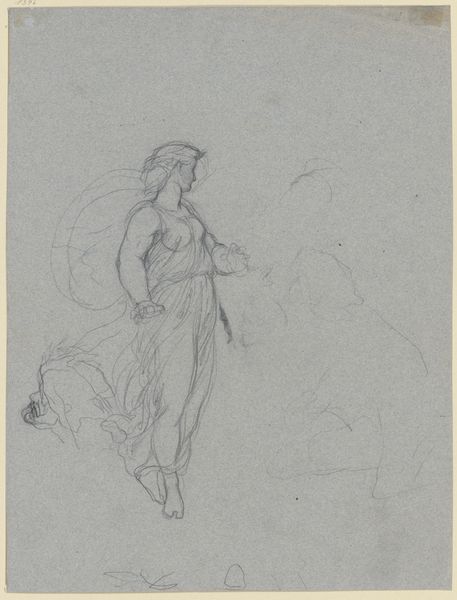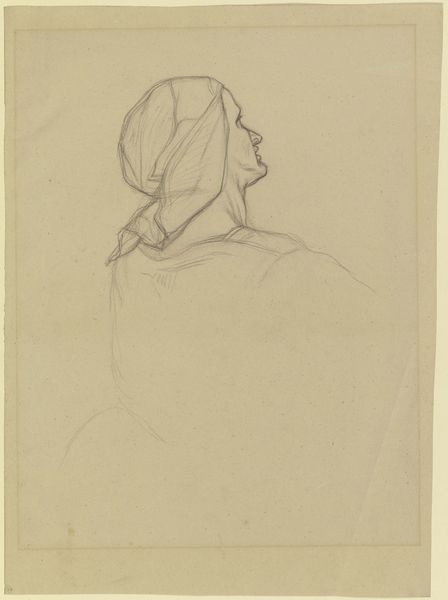
Der Totengräber aus _Hamlet und Horatio auf dem Kirchhof_ c. 1867 - 1868
0:00
0:00
Copyright: Public Domain
Curator: This is Victor Müller's, "The gravedigger from _Hamlet and Horatio in the churchyard_", created circa 1867-1868. It's rendered in pencil and chalk on paper and held here at the Städel Museum. Editor: The ethereal quality really grabs me. There is a beautiful sense of understated movement here. Even as a sketch, there's this strong, sinuous line connecting the gravedigger to the unseen space he addresses with the tool in his hands. Curator: Indeed, the composition guides the eye masterfully. Observe how Müller uses diagonal lines, particularly in the gravedigger's form and the angle of his digging tool, to create a dynamic tension across the otherwise placid picture plane. The limited tonal range focuses our attention on the figure’s anatomy. Editor: Absolutely. The symbolism, of course, is inescapable. We see a nearly nude laborer here, a subtle choice that might signify mankind stripped bare before mortality, wielding his spade. He is in quiet, confident conversation, despite what must be the grim circumstances, and barely registers Horatio's presence. It evokes not just death, but perhaps resignation and acceptance. Curator: Yes, that relationship to Hamlet and Horatio is implicit through visual language, not explicit through depiction. The negative space surrounding the gravedigger could suggest the presence of other figures, drawing our attention to his self-contained world. Furthermore, note the use of chiaroscuro – the play of light and shadow. Müller isn't simply describing a figure; he’s creating a powerful allegory of human existence through this contrast. Editor: This prefigures, too, how much this imagery would explode into modern consciousness via photography and film, both using similar archetypes. There's an eerie prescience about it, isn't there? I like to think this one pencil and chalk on paper distills the zeitgeist of a turbulent historical moment into art, which continues to evoke and ask us something about death and life together. Curator: Precisely. Müllers rendering leaves us to contend with his masterful execution. It is an image that reveals a sophisticated understanding of human form as well as of how visual dynamics elicit psychological effects within the spectator.
Comments
No comments
Be the first to comment and join the conversation on the ultimate creative platform.
